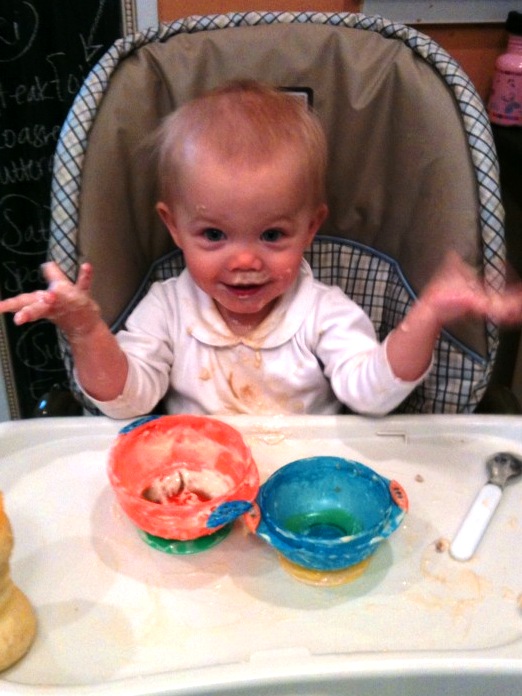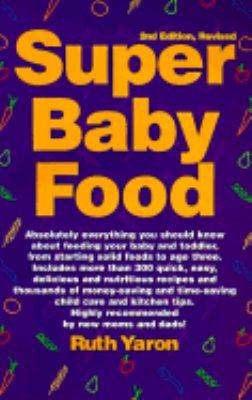
A chunk of pureed frozen okra caused me to squeeze back nostalgic tears. Long past its expiration date, this frozen cube of green vitamins had to be pitched in the trash. Watching its slow dissolve into verdant mush, I thought about the life story of that chunk of okra: Its birth in the sandy dirt of Edisto Island, South Carolina. Its ripening in the wooden stalls of George and Pink’s vegetable stand as flies zoomed suicide missions between hanging strips of sticky paper in the rafters, Pink reposed in faded cotton dress behind the cash register, shoppers in Croc sandals and swinging Lilly Pulitzer bags selected ears of corn with a barking squeak of silk and kernels. I think of how the okra spent its final days journeying north and still north away from the snarled shadows of Spanish moss to the sugar maple shade of my back yard. I think of its death in my blender, seeds and pulp and paste whirling and sucking and gurgling before it slid down Little Friend’s open gullet. Unlike the jars of commercial baby food that open with a sterile pop and then get pitched in my recycle bin, this baby food had a story to tell. A story of place, and hard work, and nourishment.
I love how food, real food, can connect us to stories from our lives, and even so I was surprised at how vehemently I came to love preparing homemade baby food. What started as an onerous chore became a cherished part of my first year with my daughter. Not only could I save money (oodles of it) by avoiding the Target aisle filled with prepared baby foods, I could actually feed my daughter a much wider variety of food, chopped, steamed and pureed in my own kitchen, and know exactly which vegetables (and frequently exactly which farmers grew the vegetables) that nourished her body. My nostalgia over the chunk of okra resulted in part because that pureed blob reminded me of a fleeting time in Little Friend’s life. But the nostalgia also came from the reminder the food gave me of my own life story as I embraced the principles of real food, baby style.
Around four months into my daughter’s time on this planet, I decided that I would make my own baby food. I hadn’t a clue where to begin. Fortunately, one of the best baby shower gifts I received was a little package of cookbook, ramekins, ice cube trays, and Ziploc bags. A make-your-own-baby-food kit. A witty poem composed for the occasion also offered instructions, which I’ll simply summarize: Consult cookbook for recipe. Steam then puree food. Pour into ice cube trays and freeze. Pop frozen cubes into Ziploc bags and store in freezer. Grab a few cubes and throw in a ramekin. Microwave and serve. Even with the right equipment and clever instructions, it was with trepidation that I moved blender and food processer to my kitchen counter where they would remain permanent fixtures for the next ten months. Could I really find the time and resources to make my own baby food?
 The answer was Yes!, with the help of a book I now consider my baby food Bible: Super Baby Foods by Ruth Yaron. Recommended by a friend who has three winsome kids who have grown up as Super Baby Food babies, this book at first overwhelmed me by its comprehensive information and then eventually guided me to understand how important a healthy, diverse diet can be for growing little ones. I found the detailed lists of what foods to introduce at what ages extremely helpful, and Yaron explains three or four methods of food preparation for each new item, giving me some flexibility in adapting the book to match the demands of my life.
The answer was Yes!, with the help of a book I now consider my baby food Bible: Super Baby Foods by Ruth Yaron. Recommended by a friend who has three winsome kids who have grown up as Super Baby Food babies, this book at first overwhelmed me by its comprehensive information and then eventually guided me to understand how important a healthy, diverse diet can be for growing little ones. I found the detailed lists of what foods to introduce at what ages extremely helpful, and Yaron explains three or four methods of food preparation for each new item, giving me some flexibility in adapting the book to match the demands of my life.
Super Baby Foods is not for the faint of heart. For moms who are used to the convenience of commercial baby food, I imagine it would be a drastic leap to suddenly prepare a meal with, say, blackstrap molasses, kale, and millet (foods new to me when I first cracked open the book). Since I was a new mom, my inexperience with the ease of commercial baby food ensured that I ignorantly schlepped my way up and over the steep learning curve of homemade, healthy baby foods. I’m glad I schlepped. A few months into my journey of planning meals and preparing food, the routine became second nature and surprisingly quick (although admittedly never quite as quick as a simple twist of a jar lid).
Just this week, I reluctantly cleared my counter and tucked the blender and food processor into the deep recesses of a cabinet. The journey that began with homemade rice cereal and pureed South Carolina okra has pretty much wrapped up now that Little Friend is munching on table food with her ten (and counting) teeth. I thought that I began the baby food journey because I wanted to find cheap, healthy alternatives to the jar goop. What resulted was an education for healthy eating at six months, sixteen years, or eighty. If kale was a nutrient packed food for a baby tummy, then surely it would do me and Big Friend good as well. Thanks to Super Baby Foods, I now incorporate a new landscape of foods into our family diet: kale, of course, and navy beans, and millet, and flax seed, and tahini, and nut butters, and swiss chard, and sweet potatoes. I’m inspired to sprout my own beans, culture my own yogurt, and change my tofu water daily. Food Revolution seems to be the buzz word these days, and I’m only too happy to see a Baby Food Revolution follow in its footsteps.
Since learning the ropes the hard way, I’ve become a strong proponent of homemade baby foods and have found helpful resources that would have made my journey exponentially smoother had I discovered the help early in my baby food making days. What follows is a list of resources, equipment, and even a favorite family recipe that will help interested moms begin the journey of homemade baby food.
Equipment list for homemade baby food:
- Blender
- Food processor
- Hand immersion blender (extremely helpful, although not necessary)
- Steamer (either a food steamer, steamer basket for a pan, or even a dish of water for the microwave will do the trick)
- 3-4 ice cube trays (each cube will hold 2 Tbsp—one serving size—of baby food)
- Quart Ziploc bags (Freezer variety works best)
- Permanent markers
- Ceramic ramekins (using plastic in the microwave to thaw the food can release toxins—use glass or ceramic containers instead)
Resources:
Super Baby Foods by Ruth Yaron
A great companion to Super Baby Foods: First Meals by Anabel Karmel. This book provides simple, nutritious, and delicious recipes for six-month-old babies through toddlers.
 I’ve just recently discovered and fallen in love with Smitten Kitchen, a blog that should be on any food lover’s list. The author of Smitten Kitchen has recently branched out in an inspiring and mouth-watering direction: Smitten Kitchen Baby Food. Her comprehensive guide to homemade baby food and yummy recipes pretty much negates the need for a shelf of baby food cookbooks. Check back frequently to find her newest baby recipes.
I’ve just recently discovered and fallen in love with Smitten Kitchen, a blog that should be on any food lover’s list. The author of Smitten Kitchen has recently branched out in an inspiring and mouth-watering direction: Smitten Kitchen Baby Food. Her comprehensive guide to homemade baby food and yummy recipes pretty much negates the need for a shelf of baby food cookbooks. Check back frequently to find her newest baby recipes.
Pittsburgh moms have an opportunity to learn from a baby food making expert in person: Sandy Woncheck of Fox Chapel is on a crusade to encourage new moms to pick up knife and steaming basket to prepare fresh, nutritious meals for little ones. And yes, she makes house calls. She also teaches one-session classes at various Giant Eagle Market Districts in the area. More information is available from this Pittsburgh Tribune article.
Recipe: Little Friend’s Super Soup (aka Pasta e Fagioli)
We have prepared (and frozen) double and triple batches of this soup, originally published in a Wegmans grocery flyer years ago. It’s such a favorite meal of Little Friend’s, it was the featured dish at her first birthday party. The soup is the perfect blend of Super Green Veggies, whole wheat pasta, and beans. It can be pureed for younger babies or left whole for older kids. (Ready in 25 minutes!)
- 1 TBSP extra virgin olive oil
- 2 stalks celery, thinly sliced
- 3 cloves garlic, minced
- 1 can diced tomatoes, undrained
- 1 can beans, undrained (cannellini, navy, kidneys, or great northerns work well)
- 2 cans (16.5 oz each) chicken stock
- 3 cups coarsely chopped spinach (We frequently substitute kale and/or swiss chard. In a pinch, a box of frozen, chopped spinach does the trick.)
- 1 cup pasta (smaller varieties, like Ditalini, blend best)
- Heat oil in a soup pot on low. Add celery and garlic; cover and cook 4 minutes.
- Add beans and tomato; bring to a simmer and cook 4 minutes.
- Add spinach, broth, and pasta. Season with salt and pepper and simmer about 8 minutes until pasta is cooked.
For other inspiring food stories and recipes, head over to Real Food Wednesdays and browse through the various postings. Always a treat!

And I can testify how easy her meals are for another to give her! Once again, thank-you for a wonderful blog and journey.
This soup is a favorite in our household as well. Our freezer always has at least one container of our girls’ delicious go-to meal. Thank you for the recipe once again!
Love it! I can’t wait to jump into the Super Baby Foods. Its been one of the many things to look forward to since I first saw it in your kitchen. I think I may need a new blender, though…
Ok, so you write my all-time favorite blog! It is seriously better than a book! I am inspired to make my new little girl some baby food when the time comes! I am motivated to try to do better with this one! I’m impressed you did so well with your first kiddo. I feel like I’m still clueless and I’m getting ready for my 2nd!